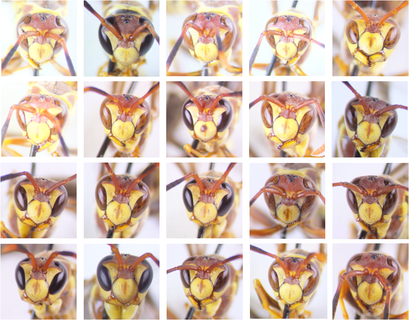|
Currently: University of California, Irvine 2022-present I'm now a second-year PhD student! This year I've been analyzing the data produced from my 2023 field work, working on the concepts and narratives for my first two thesis chapters, and ramping up an outreach display that highlights the local campus marsh. Spring 2024 will be my second field season, I'll be adding more wetland sites, as well as a new team of undergrads to help with the surveys! California Pollinator Resurvey: March-June 2022 In the 1970s, Dr. Andrew Moldenke conducted a thorough pollinator community transect survey in several habitats across Southern California. He sampled pollinating insects, documenting the flowering plant community and plant-pollinator interactions. 50 years later, Dr. Lauren Ponisio (University of Oregon) has worked to relocate Moldenke's transects and data. I worked as a field assistant on this project in 2020, and returned as a crew lead in 2022. We were based out of Borrego Springs, CA, and resurveyed the plant and pollinator communities at the same established transects (below). Arboreal Hymenopteran communities of a lowland tropical rainforest in Costa Rica: April-Sept 2021 Through an independent research fellowship with Osa Conservation, I studied the arboreal ant communities in the emergent canopy trees around the Piro Biological Station on the Osa Peninsula in Costa Rica. I looked at the effects of forest strata and tree species on ant species diversity and composition, and tested sampling methods. I donated my specimens to the University of Costa Rica, and compiled all my research in a public access website: https://osacanopyants.weebly.com/ Desert plant ecology and SoCal pollinator networks: Jan-Jul 2020 At UC Riverside, I worked with Dr. Jeff Diez and Lysa DuCharme to design a study of winter annuals at Joshua Tree NP, San Bernardino Co., California. We studied plant neighborhoods and shrub facilitation effects for several focal species of winter annuals, and established experimental plots for common garden experiments at the Agricultural Operations fields at UC Riverside. I also worked with Dr. Lauren Ponisio and Sarah Erskine to implement a bee resurvey of the Moldanke 1970s study across chaparral scrubland, Anza Borrego Sonoran desert, Torrey Pines coastal scrub, and Mount Laguna pine forest. We used transect, vane, and pan traps as well as vegetation surveys to document pollinator communities at all sites. Microbial communities in the urban paper wasp Polistes exclamans: 2017-2019
Microbial symbionts provide valuable functions for their hosts. The Hymenoptera, some of which are barely larger than some bacteria, fill diverse niches across the globe. Bees and wasps provide valuable ecological services through pollination. While the European honeybee and its gut community is relatively well-studied, we are now studying other eusocial Hymenopterans to compare how their microbiome is affected by their sociality and holometabolous life history. |
|
|
Native bee community variation at the Sevilleta National Wildlife Refuge: May-Jul 2018 Within the United States, native bee diversity is highest in the arid southwest, but is threatened by human impacts on vegetation and climate change. Here, I studied the visitation and turnover rates of pollinators in the Northern Chihuahuan Desert during a year of extreme drought. Triweekly observations were made to document phenology and presence of bee and flower communities. Native bee and pollen reference libraries were created for further study of pollinator communities in a site that hosts one of the longest on-going studies of bee populations. Habitat Preference and characterization of a new inquiline Solenopsis species at Brackenridge Field Laboratory: 2018-2019 For my undergrad thesis, I am studying the life history of Pheidole dentata at Brackenridge Field Laboratory in relation to its interactions with other Pheidole and a newly discovered inquiline Solenopsis species. I have been comparing long-term Pheidole habitat data with my own habitat studies, while also attempting to rear and observe the Solenopsis species. This particular species is within a group of inquilines whose life history has never been properly documented. Imaging of UT's Pompilidae collection: 2018-2019 The UT Insect Collection hosts a large, identified collection of spider wasps, family Pompilidae. As a side project, I have been taking stack-shot, side profile images of both sexes of every species within our collection. |
|

